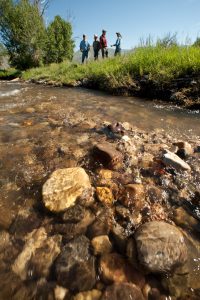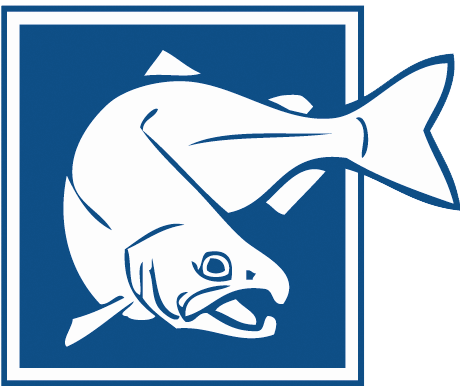 As a native of central Idaho and water master for the Lemhi Basin for 20 years, Rick Sager has seen the Lemhi River through some of its best—and toughest—times.
As a native of central Idaho and water master for the Lemhi Basin for 20 years, Rick Sager has seen the Lemhi River through some of its best—and toughest—times.
Once, the river ran wild for 81 miles through this lush valley, fed by creeks and streams and home to plentiful salmon and trout runs. As a boy, it was a bad day when Sager didn’t bring home a gunnysack full of fish. During the 1960s, biologists surveying the Lemhi counted more than 3,000 redds, the spawning nests made by salmon.
But the irrigation systems that made the valley so fertile drew off more and more water. Migrating salmon were stopped by gravel mounds and other barriers used as irrigation diversions. Fish were ensnared in wire screens meant to keep them out of irrigated fields. In the early 1990s, the Lower Lemhi once went dry for 102 days. By the mid-1990s, biologists counted less than a dozen redds in the river.
The community that claimed the salmon as its icon knew it had to do something. Grassroots partnerships between landowners, agencies and organizations took root. Locals sought solutions that would restore healthy salmon and steelhead runs without causing hardship to ranchers who depended on the Lemhi to irrigate their hay fields and grazing lands.
Today, the Upper Salmon Basin Watershed Program is in its second decade. “The program is collaborative. All the agencies work together. I think that’s the secret of the deal,” says Bob Loucks, who has been affiliated with the Program since its early years.

“Everything we’ve done has been a benefit to the fish.”
Efforts to restore habitat and flow have evolved in complexity. In 2001, the U.S. Bureau of Reclamation, a partner in the USBWP, sought landowners who would dry up ground and lease water rights to boost flows in the Lemhi. More recently, the Idaho Water Resource Board negotiated minimum flow agreements that allowed landowners to use their water when it was not needed instream.
Thirteen landowners participated, resulting in 35 cubic feet per second of cold, clean water—more than 2.2 million gallons daily. Many of them opted to make the agreements permanent beginning in 2009. USBWP’s efforts have paid off for everyone. “They’ve done a good job of keeping the flows instream,” says JoAnn Wolters, who owns property along the Lower Lemhi. “So rather than make it a yearly, scratch-your-head decision, we decided to just go for it.” In exchange, landowners have additional resources to invest in other projects.
Sager says the collaboration has been good for the Lemhi. “Everything we’ve done,” he says, “has been a benefit to the fish.”
 Official Government Website
Official Government Website
